SUMMARY
This is AI generated summarization, which may have errors. For context, always refer to the full article.
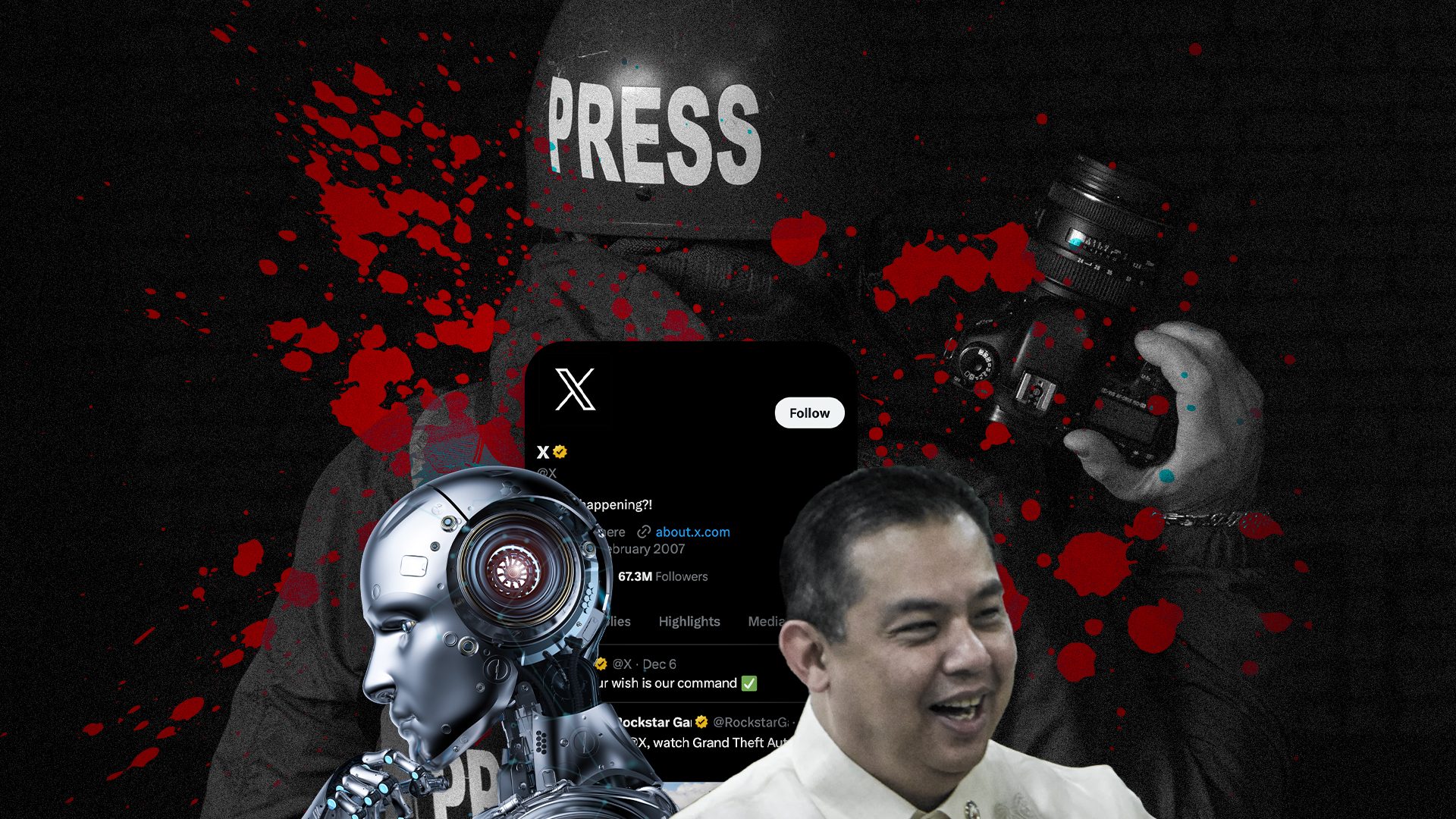
MANILA, Philippines – The fight for a free press persisted in 2023 as the world witnessed the continued intimidation, harassment, and killing of several journalists and media workers.
While the Philippines’ press freedom ranking is currently at its highest in six years, a report found that the country’s media landscape remained “largely grim.” President Ferdinand “Bongbong” Marcos Jr. may have been “amiable” toward the press, but he skipped presidential debates organized by critical media before the 2022 election, and he did not discuss media issues in his first two State of the Nation Addresses.
After all, Marcos and his family are reaping the benefits of a sophisticated disinformation machinery that’s been around for years.
Low trust scores in the news and media are also common in countries where press freedom is under attack.
In the Philippines, news outlets demonized by the former Duterte administration – such as Rappler and ABS-CBN – suffer from low trust levels or high distrust scores, as a result of the attacks and cases against them. Such trends are also seen in other countries with high reported levels of media criticism, such as the United States, France, the United Kingdom, and Greece.
The Reporters Without Borders’ (RSF) 2023 World Press Freedom Index also found bad environments for journalism in seven out of ten countries, and that the “fake content industry” is rapidly wreaking havoc on the global media landscape. Sociopolitical factors also greatly impacted media workers, for better or worse – for instance, the situation in Brazil improved after far-right Jair Bolsonaro stepped down as president, but the fierce propaganda war waged by Russia didn’t bode well for independent outlets in the country.
Here’s how the media world fared in 2023.
The journalists we lost

Journalist killings were still rampant, especially amid recent escalations between Israel and Hamas. The Committee to Protect Journalists (CPJ) said the Israel-Hamas war led to the deadliest month for journalists in over 30 years, since the CPJ started gathering data in 1992. Of the journalists who were killed, victims were mostly Palestinian.
“A deliberate attack on a journalist during a situation of armed conflict constitutes a war crime – and must be investigated as such,” the International Press Institute (IPI) wrote.
In the Philippines, radio broadcasters were targeted, including Misamis Occidental broadcaster Juan Jumalon who was shot in the middle of airing his radio program in November. The shooting was caught on a livestream of his show, and President Marcos ordered the PNP to probe Jumalon’s brutal killing. (READ: Juan Jumalon was known for bringing morning good vibes in Misamis Occidental)
Even after journalists and media workers are killed, investigations on these killings make little to no progress. Locally, different groups continued to call for justice a year after broadcaster Percy Lapid was killed in late 2022, and demanded that the perpetrators be held accountable.
The IPI said the main reason justice remains elusive for these cases is a lack of political will, as such investigations may threaten those in power and their interests.
The second half of 2023 was also marked by several deaths of prominent Filipino journalists. Newsrooms and Filipinos everywhere said goodbye to icons like Mario Dumaual, Mike Enriquez, DJ Richard, and Conrado de Quiros.
Continued intimidation, closures put media workers at risk
But harassment of the press goes beyond killings.
Amid the assault on Gaza, Israel’s communication minister Shlomo Karhi said in October that he was seeking the possible closure of Al Jazeera’s local bureau, accusing the station of “pro-Hamas incitement” and of “exposing Israeli soldiers” to potential attacks.
The press still suffered from DDoS (distributed denial of service) attacks this year, including Rappler that was targeted in October. The perpetrators involved in the October attack on Rappler used proxy providers, which mask IP addresses of internet users – a technique found in DDoS attacks against media outlets worldwide. Such providers have done little to prevent their services from being weaponized by DDoS attackers.
In November, the Philippine Center for Investigative Journalism (PCIJ) was also hit by an “active hacking attack” where the perpetrators were able to access the website’s backend. PCIJ temporarily took down its website to prevent further damage and to “protect [its] infrastructure and archives.”
Many journalists worldwide also remain jailed, including Tacloban-based journalist Frenchie Mae Cumpio who was arrested in 2020 over trumped-up charges. Specifically in the Philippine context, government allies continued to red-tag critical media in a bid to stifle dissent.
Other losses in the media industry took the form of shutdowns and layoffs. In April, the shutdown of the BuzzFeed News brand affected at least 180 jobs in the company, and Vice Media laid off over 100 workers, including its Asia-Pacific team, before it filed for bankruptcy in May.
The Romualdez saga
The many media interests of Martin Romualdez – first cousin of the President – put the House Speaker in major headlines concerning journalism issues. (READ: Mapping the businesses of Speaker Martin Romualdez)

Back in May, media giant ABS-CBN announced it was shutting down news channel TeleRadyo due to financial losses, and that it was forming a joint venture with Romualdez’s Prime Media Holdings Incorporated. The joint venture company had an initial capital of P100 million, with Prime Media having the controlling 51% stake, leaving ABS-CBN’s stake at 49%. The deal also led to the launch of DWPM Radyo 630 in June, signaling ABS-CBN’s comeback to free radio.
ABS-CBN entered the joint deal with Romualdez’s firm after the media giant suffered from a shutdown and non-renewal of franchise under the administration of former president Rodrigo Duterte. At the time, Romualdez and his wife Yedda Marie voted against ABS-CBN’s franchise renewal.
In late August, Inquirer.net ran a story on Romualdez’s funding of a Tagalog course at Harvard University, but it was later removed reportedly following orders from top management. Romualdez’s brother Philip is married to Sandy Prieto Romualdez, who owns the Inquirer Group of Companies.
The move concerned several groups, including the National Union of Journalists of the Philippines (NUJP). “While newsrooms have editorial prerogative – takedowns of articles, especially of potentially inconvenient ones – often raise more questions and generate more attention than the original,” NUJP wrote in a statement.
The article’s takedown even led to the resignation of Inquirer.net’s US bureau chief, veteran journalist Rene Ciria-Cruz, who said that “no public officials should be shielded from scrutiny by the free press.”
Inquirer.net, however, stood by its decision to delete the article.
Later in the year, the House of Representatives sought to probe the Apollo Quiboloy-owned Sonshine Media Network International (SMNI) over supposed disinformation about Romualdez’s overseas trips. A House panel also looked into urging the National Telecommunications Commission (NTC) to suspend SMNI’s operations, and cited anchors Jeffrey “Ka Eric” Celiz and Lorraine Badoy in contempt.
Celiz was cited in contempt for refusing to disclose the source who relayed information on Romualdez’s travel expenses, while Badoy was cited for “[refusing] to answer any relevant inquiry.”
While the NUJP condemned red-taggers, including the two SMNI anchors, the group expressed caution over the House panel’s approach, which involved “the same NTC (National Telecommunications Commission)” that blocked access to alternative media websites Bulatlat and Pinoy Weekly. NUJP also alluded to the franchise proceedings used by the Duterte administration to shut down ABS-CBN.
“There is no question that the two red-taggers are due for reckoning, but not in a way that uses the heavy hand of Congress and that sends the same message as it did in the previous administration: Behave or you could be next,” NUJP’s statement read.
Keeping up with the crazy world of AI and Musk’s X
Newsrooms are regularly challenged to adapt to new technologies and innovate their reporting. This year was no exception, especially with the rise of artificial intelligence (AI). (Read Rappler’s guidelines on how we use AI here.)
Social media users largely criticized GMA’s AI sportscasters when they were introduced during NCAA basketball opening day. Netizens mainly worried that AI sportscasters would compromise job opportunities meant for human workers, but also mentioned that AI might lack the ability to capture the emotional highs and lows essential to sports reporting.
The rise of AI also led to fears concerning data scraping to train AI systems. In August, The New York Times updated its terms of service to forbid data scraping of their content “without prior written consent.”
Google also launched its Search Generative Experience feature, which is currently only available in the US, India, and Japan, but is already being tested in the Philippines. The feature is a new form of search powered by generative AI, which provides users with summaries in response to some search queries. However, this may jeopardize journalists and other publishers as users may start relying on Google’s AI-generated summaries instead of sifting through other websites.
Media outlets have also been affected by Elon Musk’s takeover of Twitter, now X. Prominent news outfits such as NPR, BBC, and PBS took exception to the company labeling them as “government-funded media” in April, with some orgs even choosing to leave the platform altogether.
It was also in April when X got rid of its legacy verification system, removing blue checks from journalists and media organizations. The introduction of X’s paid verification system led to widespread impersonation, compromising integrity on the platform.

A number of news reports investigated the ways Musk was suppressing media outlets on X. An August investigation from The Washington Post found that links to websites that Musk dislikes – including The New York Times, Reuters, and competitors like Facebook – had loaded more slowly than links from other websites. Shortly after the Washington Post story was published, X reversed the delays on some of the targeted websites.
A Semafor report from September also found that X seemed to be singling out The New York Times, as there was a noticeable drop in engagements on X posts that linked to articles from the news organization.
Later in the year, X also removed headlines from links posted on the platform, after Musk encouraged journalists to publish directly on the platform. Users criticized the move, with some even adding their own fictional headlines – many of which mocked Musk – to posts with links that only displayed the page’s featured image.
Some bright spots
But not all hope is lost for journalists. This year, Rappler CEO and Nobel laureate Maria Ressa was acquitted of tax evasion charges, which the online news org described as “a victory not just for Rappler, but for everyone who has kept the faith that a free and responsible press empowers communities and strengthens democracy.”

Journalists Atom Araullo and Cong Corrales also filed complaints this year in order to hold their respective red-taggers accountable. (READ: Araullo: Red-tagging more worrisome for less protected journalists)
In its statement supporting Araullo, the Movement Against Disinformation called everyone “to push back against red-tagging and all forms of disinformation that are serious threats to democracy, human rights, and the rule of law.”
In making the most of tech platforms, young journalists in Gaza have also turned to Instagram to document various atrocities committed in Palestine, preserving records of Israeli aggression for the world to see.
“In the beginning, I didn’t know what I was doing or what I was covering,” journalist Motaz Azaiza said, as the situation in Gaza turned his Instagram account into an archive of raw, uncensored images of the war and the sheer destruction it caused. “I just wanted to document it and tell people that we are here. I am here.” – Rappler.com
Add a comment
How does this make you feel?
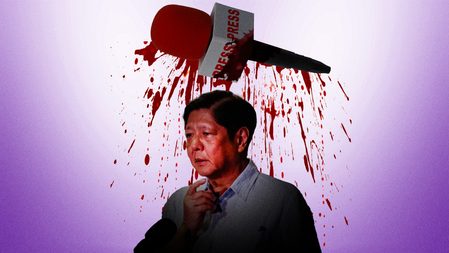
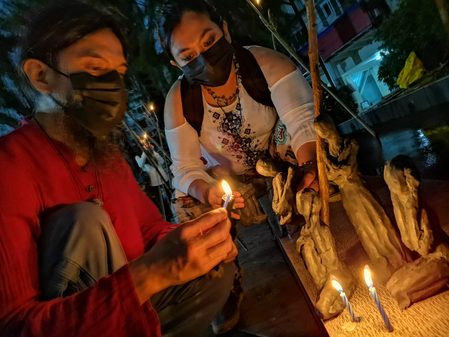



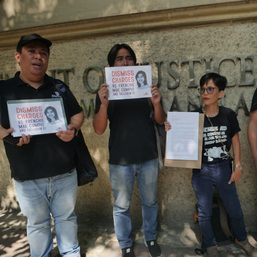
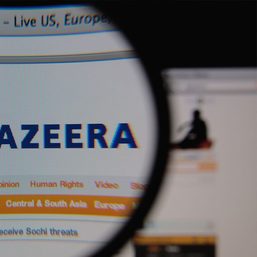


![[OPINION] You don’t always need a journalism degree to be a journalist](https://www.rappler.com/tachyon/2024/06/jed-harme-fellowship-essay-june-19-2024.jpg?resize=257%2C257&crop=287px%2C0px%2C720px%2C720px)
















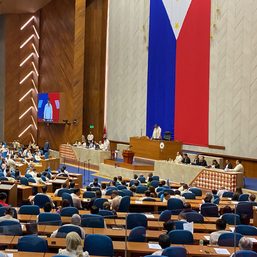

There are no comments yet. Add your comment to start the conversation.